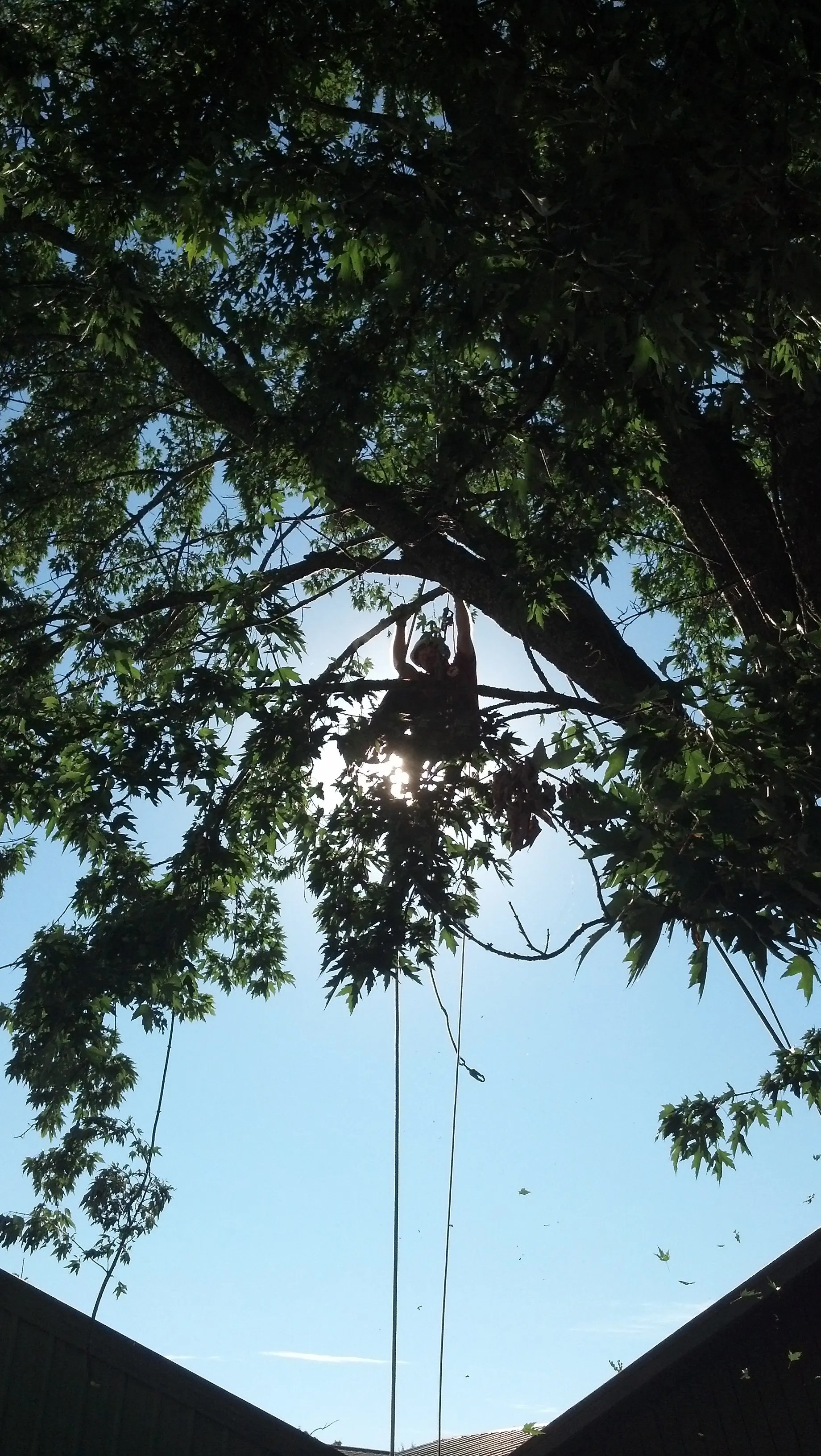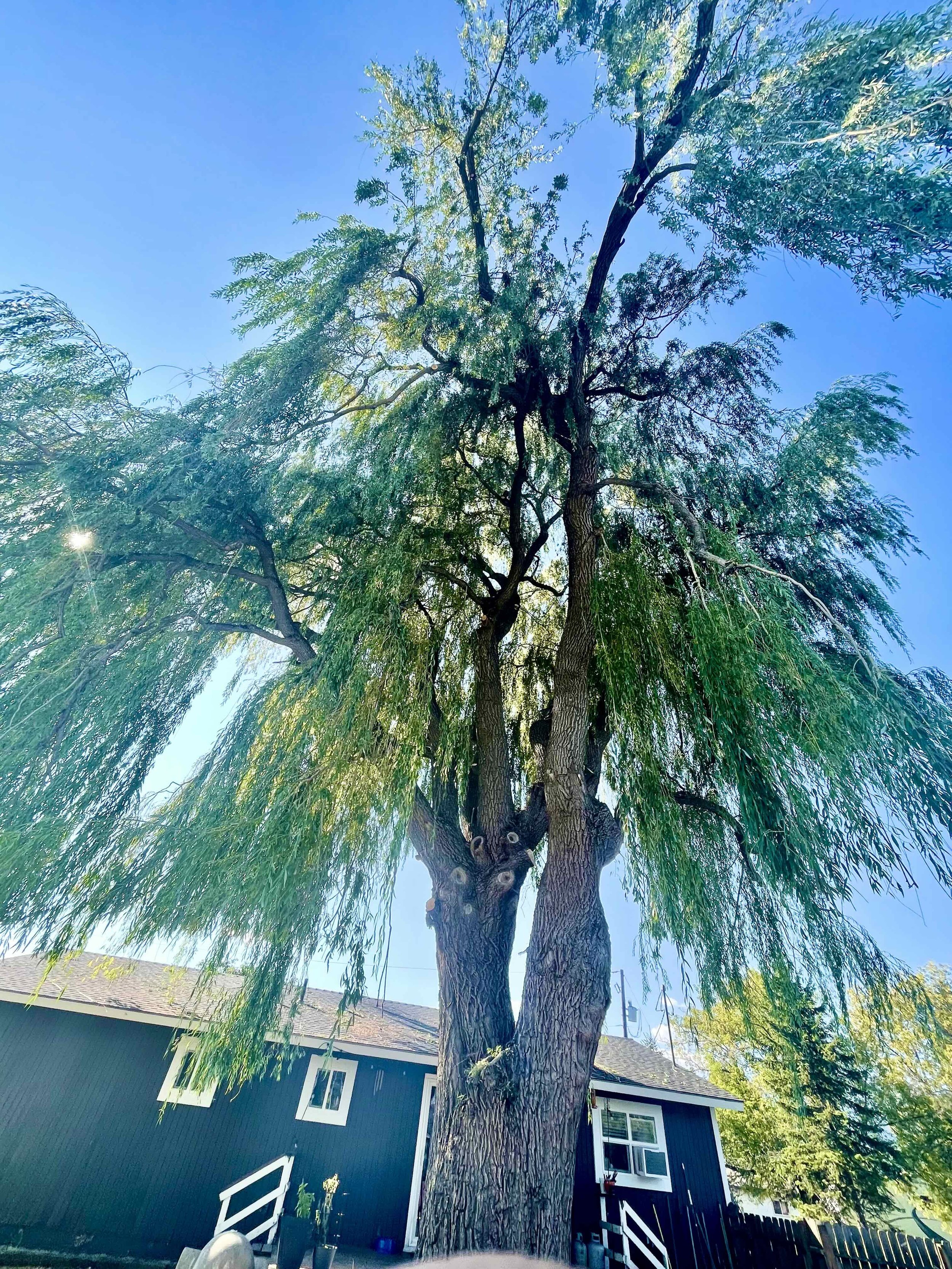
Tree Pruning
Friends don’t let friends top trees.
In urban settings, trees sometimes require a little help in matters of shape, safety, and strength.
Dead-wooding mitigates the danger of falling limbs and reduces disease. Crown thinning allows more light into a specific tree, landscape, or home. A crown reduction (but not topping!) helps rein in a tree and make it more manageable. And pruning, in general, helps to enhance the natural shape of a tree, bringing the beauty of its curves to the fore.
Tree pruning is not a simple endeavor. A saw in untrained hands can have lasting, adverse effects on tree health. When a limb is removed, a wound is created. This puts the tree at risk for disease and infection. Thus, limbs must be pruned in a manner that promotes healing. And the cardinal sin in any tree work is topping. For a variety of reasons, shorter trees are often desired in the managed landscape. However, simply bringing the tree back down to size by topping shortens the lifespan of the tree and ensures a future of hazard limbs. There are means of making a tree more manageable, but topping is not an acceptable tree pruning practice.
Fruit trees require special attention and knowledge when it comes to pruning. Each species has different requirements to engender optimal shape, light permeability, fruit accessibility and production.
Want to learn more? Check out the following publications:
• Pruning Mature Trees, a publication by ISA
• Pruning Young Trees, a publication by ISA
• Why Topping Hurts Trees, a publication by ISA
↟
“Amazing level of professionalism and attention to detail. Sand Creek Tree Services was very flexible with their schedule and was able to accomplish everything we wanted in a short amount of time. I really appreciate the willingness to fit us into their schedule on short notice. Quality work and good people. Highly recommend.”
-Samuel, Sandpoint


